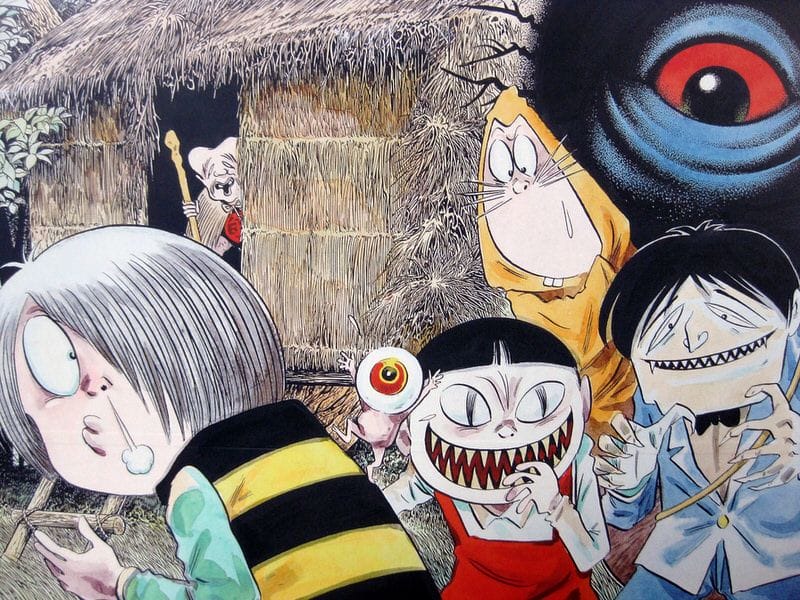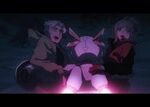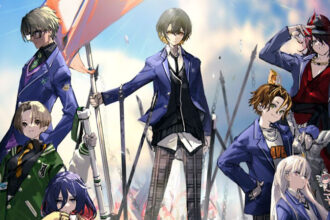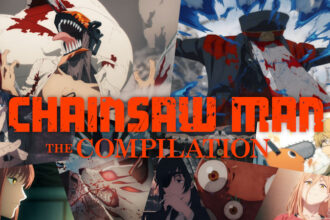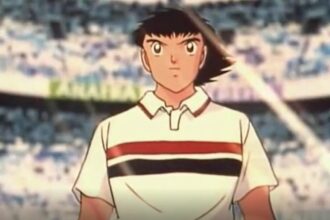Spend a few minutes on any anime charting website and you will notice a trend: Look at all those demon hunting anime! From Dandadan to Chainsaw Man, Jujutsu Kaisen to Kimetsu No Yaiba, it seems like every show this side of the sun is hopping on the trend. Why is that, though? Why have demons, spirits, and the rest been consistent staples of anime storytelling? What lies within the roots of it all, where did it start, and why does it pervade? The answer lies deep within Japanese mythology, hundreds of years ago…
Yaoyorozu no kami is the Shintoist phrase, meaning an infinite number of gods exist within Shintoism, and according to Shinto belief, there is truly a god in everything (McMillan). From kappa to shikigami, oni to tengu, there are beings all around us, and these spirits are known as yokai. Varying in form and moral standings, it’s hard to classify a yokai as any specific creature like you can with folktales in the West, so each of these supernatural creatures is simply known as yokai, or “strange apparitions” (Meyer). The yokai were popularized during the Edo period of Japan, and during this time period were mostly attributed to Toriyama Sekien, a man creating creature after creature in the style of encyclopedia parodies of the time (Davisson), pairing each oddity with a story blurb on the side. This created a sort of snowball effect with the other artists of the Edo times, even drawing in the great woodblock artist Hokusai, and would soon unfold to be a heck of a phenomenon. The Edo period was certainly, then, the golden age of yokai (Mikiso, Perez). Soon after the Edo period waned, and the late 19th century came, so too did changes in Japan’s views on yokai. They were seen as childish, immature, and embarrassing – so with Japan’s modernization, their superstitions were shed (Mikiso, Perez).
That is, until a little manga called Gegege No Kitaro.
“Ge, ge, ge ge ge no ge…”
Gegege No Kitaro may not be so well known in the West, but it’s a hallmark of anime in its country of origin. The classic manga by Shigeru Mizuki is a horror-comedy bout, focusing on one yokai after another in episodic fashion as the titular Kitaro attempts to reconcile the two species and stop the yokai from enacting violence upon the humans. It’s in this adaptation that we get the definition of the ethereal yokai as outright evil, and needing some of their reins pulled on from time to time!
The first episode of my adaptation of choice, 2007 (on account of its funky interaction of the theme song and the gorgeous backgrounds), takes the story of the suiko, a water goblin-like the kappa (Meyer, 2), and introduces it with the usual Kitaro trappings. Since a group of kids knocked over its shrine and broke the seal, the suiko sought revenge and went after the ones that awoke it…So it’s up to Kitaro to put it back where it belongs before it causes any more harm! He employs the help of fellow yokai like the Neko-Musume (or, “Catgirl”) and uses techniques like ‘Internal Electricity’ to shrink the yokai back down to size and seal it back in its tomb.


Not only did Mizuki reintroduce yokai to Japan through Kitaro, but he also introduced the supernatural in a way that would define anime storytelling for years to come. See, the yokai are powerful entities here, and, if upset, have dastardly capabilities that can be used to take revenge against others, or the ignorant unknowing not respecting the yokai‘s existence, like the kids with the suiko‘s shrine. Hence, Kitaro’s interventions throughout the story of each interpretation; if it weren’t for him, certainly, the balance would be upset, and myriad yokai would take over the world! Though Gegege No Kitaro is not so black and white, it makes sure to introduce all yokai of all alignments, like the ones that ally with Kitaro, and the ones indifferent to it all with their own motivations, always giving a large brush stroke to the creatures, making sure that not all yokai are one way or the other. Kitaro really plays with the variance of it all. Balance also plays a huge part in Shintoism, which is no doubt an influence on Kitaro, but lots of other anime!
A good life requires four ideals in Shintoism: clean, bright, right, and straight (Yamakage). If any one of these four elements is off, it’s up to the individual to undergo acts of harai (or harae), to cleanse impurities and restore said ideals. A form of this can be the misogi, or “water cleansing”, accomplished by cleansing the entire body with water, or the temizu, where shrine visitors are asked to purify their mouths and hands before entering said shrine. Shubatsu is another method of cleansing, involving the sprinkling of salt, over an impure area or over a person for cleansing. Sound familiar? That’s right…Reigen of Mob Psycho 100 employs this technique frequently to varying effectiveness. Purification can also be seen in plenty of other anime, like Higurashi: When They Cry with Rika’s ritual dances. Called the kagura dance, these are done during rituals or harvests to entertain and please the gods (“Quick Introduction to Kagura”). In that very same Gegege No Kitaro episode mentioned earlier, not only did Kitaro use his supernatural powers, but items like spiritually-imbued pocket sand, a vest of many purposes, and cryptic allys all assisted Kitaro in his quest to suppress the powerful yokai. Though the fictional ways are often larger than life, the methods remain the same. Fictional and real techniques are used in anime to suppress evil and restore balance to the world.
Gegege No Kitaro certainly started popularizing yokai within the culture again, bringing to light once more the varied morality of the yokai, and in having Kitaro suppress wicked spirits, established a dynamic between good and evil that would be used over and over again! You’d see the influence early on in shows like Dororo, Tezuka’s manga classic about a samurai recovering each of his lost limbs, which involves the samurai fighting many different spirits – some good, some bad – while he roamed the land, searching for his missing body parts. Whether inspired by Shigeru Mizuki himself or Japanese mythology, Tezuka had his finger on the pulse! Par for the course for the Godfather of manga. You’d see trickles of other demon and spirit-focused work early in anime’s birth, like Go Nagai’s Dororon Enma-kun and Devilman, but nothing huge until much later.
As the medium evolved in the ’80s and ’90s, so too would the storytelling, with big hitters like Dragon Ball and Yu Yu Hakusho having explicit demon worlds (or demon realm, in Dragon Ball’s case), stating the need for the evil being’s suppression time and time again. From the very beginning of Yu Yu Hakusho, Yusuke is battling malevolent spirits and making sure they can’t hurt anyone again. Yet once more, all spirits weren’t evil – he was accompanied by none other than the Grim Reaper, Botan, along the way.
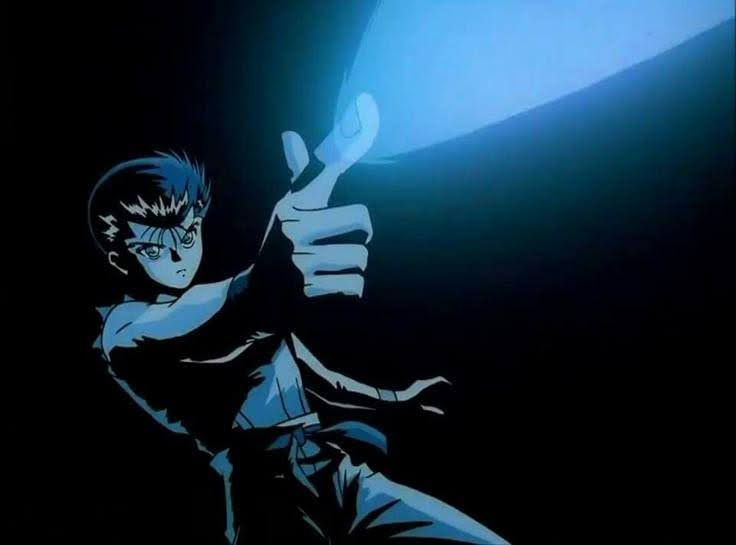

In Dragon Ball, those who came from other worlds were both good and evil. Take Frieza or Beerus, destroyers of worlds, and Piccolo, an enemy-turned-ally from Planet Namek. You have ghosts from the Other World mirroring the religious supernatural, and the superpowers to boot. The Genki-dama too, the “Spirit Bomb”, gets the energy from everyone on Earth lending Goku their energy, a technique that ties right back into Shinoist themes of harmony and oneness. That might be the largest example of the spiritual in Dragon Ball, but the influences Shintoism has on it trickles through its blood, from how it deals with souls to enemies in oni forms, even stretching to other cultures entirely, as its original roots hold strong in Journey To The West (look no further than Goku’s namesake).
Meanwhile, Yusuke’s weapon of choice is the “Reigan,” or ‘Spirit Gun’ in English, and can function in ways similar to a harai ritual by way of cleansing demons, or demolishing them entirely. Yu Yu Hakusho was even initially pitched as a ‘Spirit Detective’ manga, and ran with an episodic, Kitaro-like flow which saw Yusuke solving bizarre mysteries of the supernatural around town. This isn’t to mention many other spiritually-influenced, problem-solving action romps of the time, like Yoshiaki Kawajiri’s Wicked City, where a metropolis descends into madness as the rise of monsters ensues much chaos, leaving one guy with a gun to solve it all, or Digital Devil, a precursor to the Megami Tensei video game series, featuring a yokai-like creature inhabiting a computer, leaving the protagonist to restore the balance and protect the world from the devil’s whims.
At the turn of the millennium, you begin to see the dominoes fall a little faster. You got more peaceful romps like Mushi-Shi and Natsume Yuujinchou, modernized takes on an old classic, with each protagonist making friends with spirits and constraining those out of hand, but with a heavy emphasis on harmony, on how this is life – living alongside spirits, and not against them. Super Gege, as it were. Important to note is Hayao Miyazaki’s heavy-hitter Spirited Away came out during this time period, furthering the importance of harmony with nature and the spiritual as Miyazaki and his studio have always tended to do, but in this one above many others.
At the same time, that ‘good versus evil’, ‘restoration of balance’ type story refused to die. In fact, you really start to see it thrive. Adaptations like Fullmetal Alchemist & Brotherhood drive home themes of balance and “spirit hunting” in a quickly-unraveling conspiracy quest, Claymore and D. Gray Man‘s desaturated, against-all-odds good versus evil tales also focus heavily on demon hunting. Berserk, though started much earlier, really hits its stride around this time with the Black Swordsman arc, and you’ve gotta mention Naruto and Bleach‘s obsessions with the spiritual – Bleach‘s shinigami (gods of death), Naruto‘s susanoos become an integral power later on, tying back to ancient Japanese kami Susanoo-no-Mikoto (Weiss). Big shows at the time like Death Note made modernized interpretations of Japanese mythology like the shinigami, as well as the world they inhabit. No matter which anime you watched around this time, there could be a reference like this underneath your very nose.


Due to this thick condensation and the rising popularity of anime, the spiritual became impossible to ignore! Each show became popular in its own right, and shows that were influenced by earlier creations became inspirations for newer ones. Interactions on that classic formula began, the good versus evil with mythological twists, and that’s how you get the sudden explosion of demon hunting shows! We have shows like Jujutsu Kaisen, Demon Slayer, and Chainsaw Man. Each has these supernatural villains with clear influence. Chainsaw Man‘s devils have clear inspiration from yokai, Famine’s powers being comparable to the Gashadokuro, or ‘rattling skeleton’ yokai. Demon Slayer‘s antagonist Yorrichi Tsugikimi is inspired by the sun goddess Ameratsu, and features other smaller villains inspired by yokai, like the Tsuchigumo inspiring the Spider Family. Jujutsu Kaisen wears its heart on its sleeve by having the stories of the ‘cursed spirits’, shikigami, and ghosts mimic the many stories of the yokai and supernatural of old. These familiar elements are given new life by placing them in varying situations, varying time periods, and varying premises, but it’s interesting to see the same themes and same creatures in different forms, time and time again, because of mythology established years prior.
All eras encompass these Shintoist themes in their bones. Much like how Christianity influences media here in the West, so too is Japan with Shintoism. From yokai discovery in Gegege No Kitaro to modern day devil hunting in Chainsaw Man, harai cleansing rituals to spirit guns, there’s a wax and wane to how each animanga story incorporates these. Even in slice-of-life shows like Lucky Star, you get extended segments like the New Year’s shrine visit, while not out-and-out supernatural, the religious influence can’t be denied.
When it comes down to demon hunting, things can absolutely get formulaic, much like anything else if repeated ad nauseam. There are a bunch of repeating themes in anime, from isekai to shojo, but it’s important that we don’t write off something for its inspirations alone. See all the anime that take from yokai and Shinotism. Though there’s a clear through-line if you look hard enough, there’s a taste for each viewer, mainstream or otherwise: Jujutsu Kaisen for a battle shonen flavor, Doomed Megalopolis for the hardcore historians. The cliche stands: There is something out there for everyone. You don’t gotta be a yokai fanatic or a Japanese mythology extraordinaire to enjoy these great shows, and hey, I’m neither of them! Keep those demon hunting shows on rotation. Worst comes to worst, you’ll get a handful of cool yokai and some really awesome superpowers.
Works Cited
- Camara, Robert. “Can You Pass the Salt, Please?”, 1 Jan. 2008, japanesereligions.blogspot.com/2009/03/can-you-pass-salt-please.html.
- Davisson, Zack. “A Brief History of Yokai.” 百物語怪談会 Hyakumonogatari Kaidankai, 5 Jan. 2014, hyakumonogatari.com/2013/02/05/a-brief-history-of-yokai/.
- Hane, Mikiso, and Louis Perez. Modern Japan: A Historical Survey. Rutledge, 2018.
- McMillan, Christian. Holism: Possibilities And Powers. Routledge, 2019.
- Meyer, Matthew. “Yokai.Com.” Introduction to Yōkai | Yokai.Com, 1 Jan. 2010, yokai.com/introduction/.
- Meyer, Matthew. “Yokai.Com.” Suiko | Yokai.Com, 1 Jan. 2010, yokai.com/suiko/.
- “Quick Introduction to Kagura.” The Official Guide to Hiroshima – Travel and Tour Information, 1 Jan. 2015, dive-hiroshima.com/en/feature/kagura-guide/.
- Tincher, Diane Neill. “Shinto - the Peaceful Spiritual Heart of Japan.” More Than Tokyo, 10 Feb. 2024, www.morethantokyo.com/shinto-the-heart-of-japan/.
- Weiss, David. The God Susanoo and Korea in Japan’s Cultural Memory: Ancient Myths and Modern Empire. Bloomsbury Academic, 2022.
Header Image: Gegege no Kitaro, © Mizuki Productions
